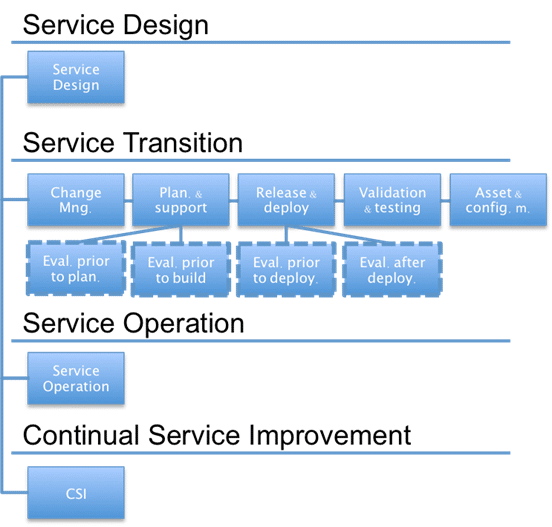 Neven Zitek
Neven Zitek
February 24, 2015
Within the ITIL service management framework, everything is considered to be a change – whether we add new users and user groups (standard change), or introduce new equipment and services to the existing environment (normal change). But, some changes require special care because they either transform the current landscape, or change the way end-users consume the services provided. Such changes are referred to as major change, and within this article we’ll explore best practices that are designed to ensure a smooth transition during major changes.
If you’re new to ITIL processes or change management, at this point I recommend that you read the following article: ITIL V3 Change Management – at the heart of Service Management in order to familiarize yourself with general change management principles. Moreover, you can find additional articles that describe change management from both an ITIL: Elements of Change Management in ITIL, and ISO 20000: Design and transition of new or changed services in ISO 20000 perspective.
According to ITIL, the Change Evaluation process evaluates separate change phases prior to moving on to the next one. This process is illustrated in Figure 1, and it should ensure a smooth implementation of these extensive changes.

The result of the formal Change Evaluation is documented in a Change Evaluation Report, which is the main output of the Change Evaluation process.
The main responsibility of the Change Manager is to control the lifecycle of all changes. His primary objective is to enable beneficial changes to be made, with minimum disruption to other IT services. For important changes, such as major change, the Change Manager will hand the authorization of changes to the Change Advisory Board (CAB).
The Change Advisory Board consists of appropriate authority level stakeholders in relation to change impact level. For standard changes (low risk), usually only local authorization level is sufficient. For changes with higher impact (higher risk), IT management board authorization is required, and for major changes (highest risk), business executive board authorization should be granted.
The Change Manager works and performs change risk assessment in cooperation with other roles (as appropriate): Applications Analyst, Technical Analyst, Configuration Manager, Project Manager, Risk Manager, and others.
From personal experience, as part of a Type III service provider organization, introducing Cloud and Cloud-based services into an existing environment has proven to be the most challenging, contrary to marketing materials Cloud providers release. Such services are a great example of the Change Evaluation process, as they radically transform the way services are delivered, they usually require a massive redesign of service interfaces, and they require high-level management involvement due to their nature – migrating services (or part of the services) into the Cloud is often a strategic-level decision.
Moreover, larger customers usually have several service providers (infrastructure, networking, application, etc.), and major changes have an impact on all of them; thus, special effort is required to ensure all parties are involved based on their areas of responsibility.
Every change is a risk, and major changes present major risk to the current environment and other processes and services. As mentioned in one of the previous articles: “What differentiates good IT Service management from bad, the answer would be in the way they handle changes,” (ITIL Release and Deployment Management Part 2 – deployment methods and early life support) and what differentiates good IT service management from great, is the way in which they handle major changes.
You can also check out this free preview of the Change Evaluation Process template to become familiar with the budgeting and controlling concept.